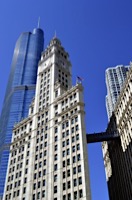
When I first started as a startup CEO in 1999 there were no guides on raising venture capital. There were no explanations for all of the confusing details outlined in a term sheet.
Drag along rights? Um, OK. That sounds fine to me. I barely understood it. I asked my lawyer for an explanation. He gave me the human explanation for what the term meant. It sounded logical enough, so I moved on to the next point. Only later did I learn how it could be used to screw me.
Redemption rights? Sounds harmless enough. But know that every term in your term sheet is there as a result of some dispute of the past between shareholders or between shareholders & management. Founders don’t often think about “primary” stock vs, “fully diluted” stock in terms of voting rights. I never did. VCs always know the voting thresholds and no number in your term sheet is there by accident.




















